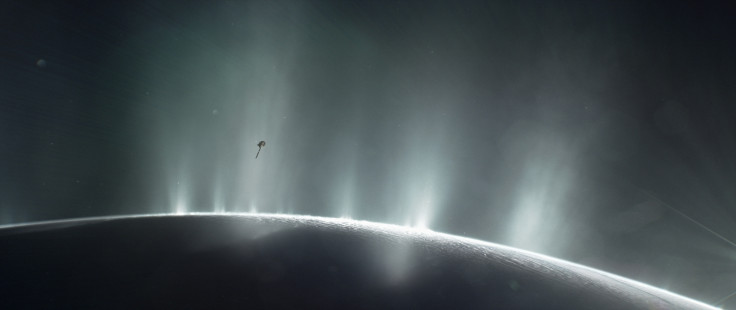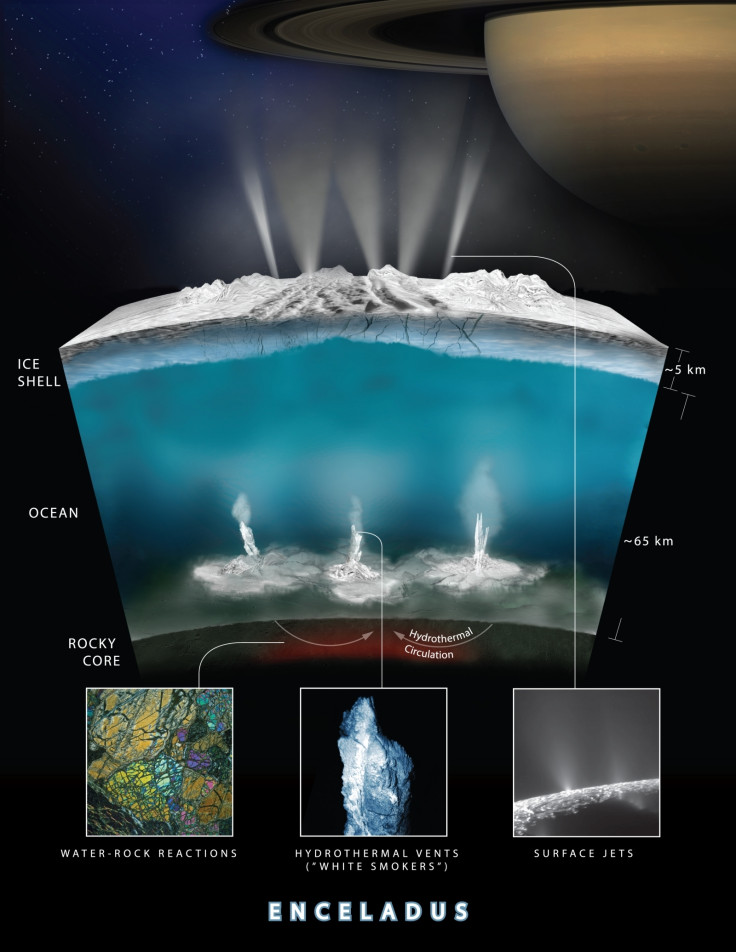Nasa's SELFI will soon look for alien life in Saturn's moon Enceladus
Scientists have long theorised that there could be microbial life in the vast oceans below Enceladus' frozen crust.

Nasa has announced plans to develop what they call a "Submillimeter Life Fundamentals Instrument" or "SELFI". This device will be sent into the icy plumes of Saturn's moon Enceladus to study the composition of its water, with Nasa hoping to find alien life in its oceans.
Enceladus is the moon that famously spews ice and water vapour out of its south pole. It is also one of the places that is believed to have the right conditions within the solar system to support alien life.
According to a report by Nasa, SELFI has received support to begin development at the Goddard Space Flight Center in Greenbelt, Maryland. Nasa said that this new remote sensor will be a significant improvement over existing submillimeter wavelength devices, according to Gordon Chin, project SELFI's Principal Investigator. "This is one of the most ambitious submillimeter instruments ever built," he said.
Data collected from the Cassini mission – which ended in September – has proven that there is a large ocean under the surface of Enceladus.
Cassini found that there is a slight wobble in the orbit of the moon, which is indicative of liquid underneath the crust. Scientists previously thought that Saturn's sixth-largest moon was frozen solid.
SELFI will study the near-constant plumes of vapour and ice that erupt from within Enceladus. Traces of chemicals and their make-up is what Nasa is looking to learn more about. By studying the composition of the oceans beneath the surface, they will be able to ascertain the moon's ability to host some form of life, the space agency said.
The plumes of water and ice are explained by the influence Saturn has on Enceladus. Tidal pressures from Saturn put enough of a strain on the moon, resulting in its core getting hot enough to maintain liquid water under the surface. The same forces also crack the ice on the surface, allowing water vapour and shards of ice to escape from the moon, explained Nasa.

The reason for the assumption that there could be life in those warm oceans deep inside Enceladus stems from the fact that deep within Earth's oceans, there are similar hot hydro-thermal vents that support extreme forms of life. This could be the case in Enceladus as well, theorise scientists.
"Submillimeter wavelengths, which are in the range of very high-frequency radio, give us a way to measure the quantity of many different kinds of molecules in a cold gas. We can scan through all the plumes to see what's coming out from Enceladus," Chin said.
"Water vapour and other molecules can reveal some of the ocean's chemistry and guide a spacecraft onto the best path to fly through the plumes to make other measurements directly."
It is not clear if the instrument will actually land on the moon to collect samples, or only fly by one of the over-100 sites on the moon's surface that is spraying water out.
One of the reasons Cassini was crashed into Saturn was to protect sites like Enceladus and Titan from contamination, should they actually carry alien life.





















